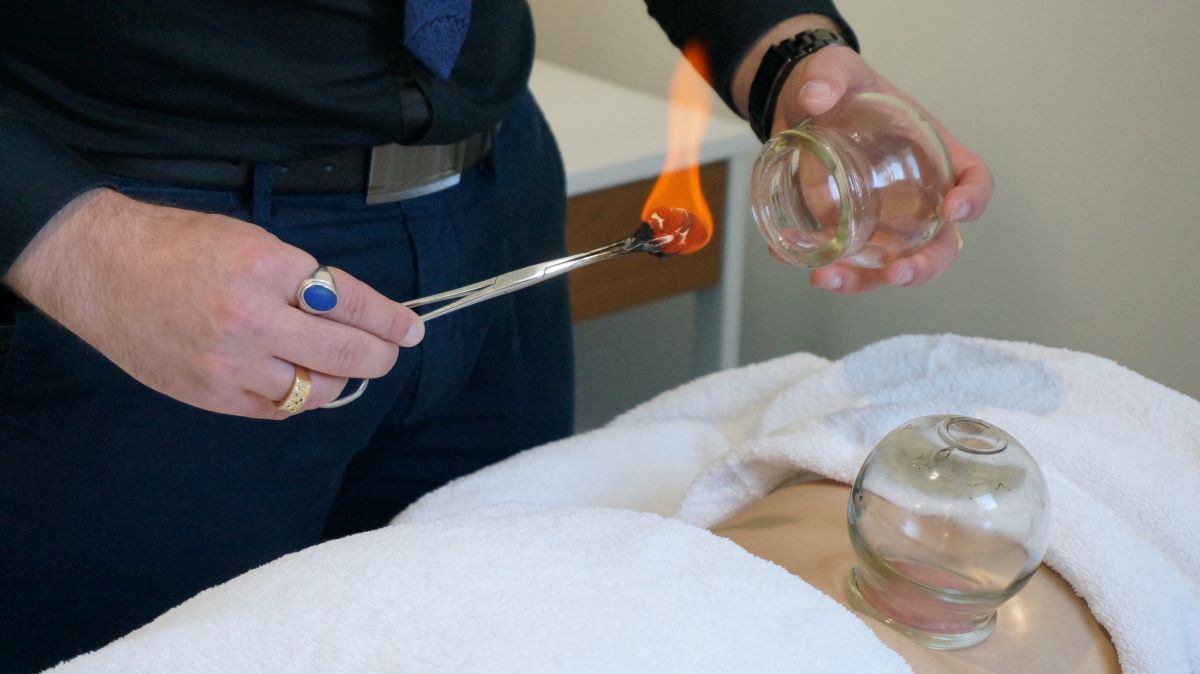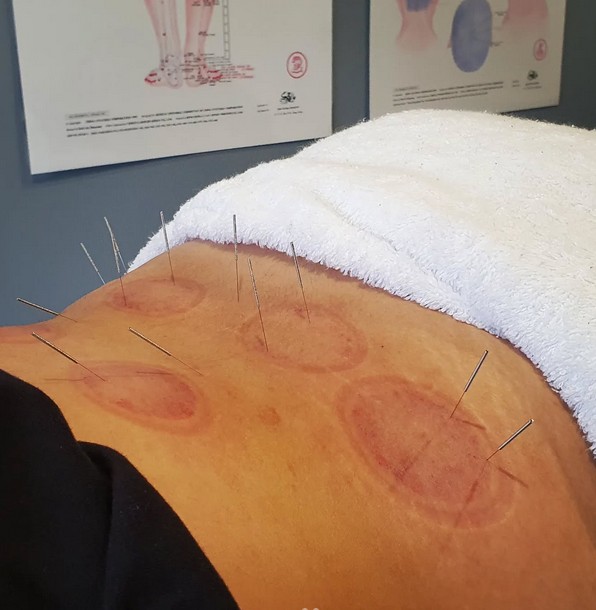Your Ultimate Resource for Identifying and Managing Allergic Reactions to Herbal Remedies
Discover the Most Common Herbal Allergens That May Trigger Your Allergic Reactions

Recognising herbal allergens is vital for anyone who may be vulnerable to allergic reactions. These allergens can cause serious health issues, which is why early identification is so important. Some of the most commonly known herbal allergens include Chamomile, echinacea, and ragweed, often found in a variety of herbal teas and dietary supplements. Being informed about these plants allows individuals to manage their exposure effectively and avoid potential health hazards. Here’s an extensive list of common herbal allergens that everyone should be aware of:
- Chamomile
- Echinacea
- Ragweed
- St. John's Wort
- Goldenseal
- Garlic
- Ginger
- Ginseng
Understanding which herbs contain these allergens is essential for individuals, especially those with known sensitivities, to make informed decisions about their herbal consumption. The overlap between culinary herbs and those used in traditional herbal medicine complicates matters, as many people may unknowingly consume allergens. Proactively identifying these herbs is crucial for effective allergy management, ensuring a safer and more enjoyable experience with herbal products.
Identify the Key Symptoms of Herbal Allergies You Need to Watch For
Recognising the symptoms of herbal allergies is crucial, as these can range from mild discomfort to severe, life-threatening conditions like anaphylaxis. Early identification of these symptoms is imperative; it can prevent complications from escalating into more severe health issues. The most frequently reported symptoms of herbal allergies include:
- Itching or skin rash
- Swelling of the skin
- Hives
- Nausea
- Vomiting
- Shortness of breath
- Anaphylaxis (in extreme situations)
Symptoms can appear quickly, sometimes within minutes of exposure, while others may take hours or even days to manifest. This variability complicates the identification of the exact cause of an allergic reaction. Therefore, it is critical to remain vigilant about any changes following the introduction of new herbs into one’s diet or wellness routine. Early recognition of symptoms enables prompt intervention, essential for preventing more severe responses and ensuring overall safety.
Why Conducting Tests on Herbs Before Use is Essential for Effective Allergy Management
Engaging in thorough testing of herbs prior to consumption or topical application is vital for minimising the risk of allergic reactions, especially for those with known sensitivities. Many individuals mistakenly believe that because a herb is natural, it is inherently safe to use; however, this assumption can lead to serious health repercussions. Adopting a systematic testing approach can clarify potential reactions and provide essential reassurance.
Participating in preliminary testing enables individuals to identify sensitivities that may not be immediately obvious. This proactive strategy is particularly crucial for those with existing allergies, who are at a heightened risk of experiencing adverse reactions. By introducing new herbs gradually and carefully monitoring their effects, individuals can cultivate a personalised understanding of what is safe for their unique needs. Avoiding adverse reactions is paramount, making testing a critical safeguard before extensively using any herbal product.
Effective Strategies for Managing Allergic Reactions to Herbs

Managing allergic reactions to herbs requires both immediate and long-term strategies to ensure safety and health. Upon noticing an allergic reaction, the first step is to stop using the herb immediately. After ceasing usage, individuals can take several immediate actions to alleviate symptoms and ensure their safety:
- Administer oral antihistamines to effectively relieve mild symptoms.
- Apply cool compresses to the affected areas to reduce discomfort.
- Closely monitor symptoms for any escalation or worsening.
- Seek medical attention if symptoms worsen or do not improve within a reasonable timeframe.
For long-term management of herbal allergies, individuals may need to avoid known allergens while exploring alternative herbs that do not provoke reactions. Consulting with a healthcare professional can provide tailored allergen avoidance strategies, ensuring that dietary and lifestyle choices remain safe while still benefiting from the advantages of herbal remedies. Gaining a thorough understanding of one’s allergy profile enables informed decisions about which herbs to incorporate or exclude from daily life, promoting a safer and healthier approach to herbal usage.
Expert Advice on How to Conduct Effective Tests on Herbs for Allergies
Mastering the Art of Conducting a Patch Test Safely and Effectively
Conducting a patch test is a reliable method for determining allergic reactions to herbs. This testing technique involves applying a small amount of the herb to the skin and closely monitoring for any adverse reactions. Here’s a comprehensive step-by-step guide to performing a patch test safely and accurately:
- Select a small area of skin, preferably on the forearm or the inner elbow.
- Clean the area thoroughly with soap and water; allow it to dry completely.
- Apply a small amount of the herb, either in its raw form or as an extract.
- Cover the application site with hypoallergenic tape to prevent contamination.
- Leave the patch in place for 48 hours, ensuring it remains dry and undisturbed during this period.
- After 48 hours, remove the tape and observe the area for any signs of irritation or reaction.
- Document any changes, noting the type and severity of reactions observed.
This controlled testing approach can reveal sensitivities that may not be apparent through casual exposure. The key to successful patch testing lies in meticulous observation and accurate documentation, which can aid discussions with healthcare professionals if further evaluation is needed.
Best Practices for Safe Oral Testing of Herbs: What You Need to Know

Oral testing of herbs can be conducted safely using diluted herbal extracts, allowing individuals to gauge their reactions effectively. It is crucial to start with very small amounts to avoid adverse symptoms. Following these guidelines will enhance safety during oral testing:
Begin with a diluted preparation of the herb, such as a few drops of tincture mixed with water. It is advisable to wait at least 24-48 hours before progressing to larger amounts if no reaction occurs. When starting oral testing, consider these best practices:
- Consult a healthcare professional to select appropriate herbs for testing.
- Maintain a detailed log of each test, noting the amount consumed and any reactions experienced.
- Start with a single herb to isolate potential allergens effectively.
- Be aware of any cross-reactivity with other known allergens.
Oral testing should only be conducted in a comfortable environment, ideally where help is readily available in case a severe reaction occurs. Monitoring how your body responds to specific herbs can empower better dietary choices in the future, contributing to a safer and more informed approach to herbal consumption.
When Is It Necessary to Seek Professional Help for Herbal Allergies?
Seeking professional help is essential when experiencing severe symptoms or if there is uncertainty about using herbs. If reactions escalate or if there is any doubt regarding the potential for a significant allergic response, consulting with a healthcare provider is advisable.
Examples of situations that warrant consulting a healthcare provider include:
- Experiencing difficulty breathing or swelling of the face and throat.
- Persisting symptoms beyond mild reactions, such as severe hives or gastrointestinal distress.
- Having a history of anaphylaxis or severe allergic reactions.
- Being unsure about the identity of the herb or its possible interactions with medications.
Healthcare providers can offer allergy testing, professional guidance on management, and tailored strategies for lifestyle adaptation. They can evaluate the herbal components you wish to incorporate, ensuring safety while allowing for the potential benefits of herbal remedies.
Essential Steps to Prepare for Herbal Allergy Tests
Gathering the Essential Materials for Effective Allergy Testing
Preparing for herbal allergy tests requires careful organisation and attention to detail. You will need a variety of materials to ensure that your testing is both safe and effective. Essential items include the herbs you wish to test, hypoallergenic tape for patch testing, and a diary to record any observed reactions.
Ensuring all materials are clean and safe for use is critical. For a successful test, consider gathering:
- Selected herbs (fresh or dried)
- Hypoallergenic tape for skin applications
- A clean and safe container for mixing extracts
- A notebook or digital diary for documenting reactions
Additionally, having a reliable antihistamine on hand in case of an unexpected reaction is advisable. This preparation not only helps standardise the testing process but also contributes to a safer experience overall. Being well-equipped with the necessary materials allows for a smoother testing procedure while minimising the risk of contamination or complications.
Setting Up a Controlled Testing Environment for Herbal Allergy Tests
Establishing a controlled environment is fundamental for conducting herbal allergy tests. This setting minimises the risk of cross-contamination and ensures that results are accurate. Testing should ideally be done in a clean, quiet space, free from potential allergens and distractions.
Considerations for setting up this environment include:
- Choosing a location that is consistently clean and well-ventilated.
- Ensuring all surfaces are disinfected before starting the test.
- Limiting the presence of pet dander, pollen, and other common allergens.
- Using gloves and maintaining hygiene throughout the testing process.
Carefully controlling the testing environment not only enhances the reliability of your results but also contributes to a more comfortable testing experience. A well-structured testing space allows for focused observation of any reactions, leading to informed conclusions about potential herbal allergies.
Monitoring Reactions Post-Herb Testing: How Long Should You Observe?
Monitoring reactions is a critical component of testing herbs for allergies. It is advisable to observe the area for at least 48 hours after conducting a patch test to capture any delayed reactions effectively. Immediate symptoms may manifest quickly, but some responses can take longer to appear.
During this monitoring period, it is essential to maintain a detailed log of any changes observed, noting the time of onset and the duration of the symptoms. Key points to consider include:
- Check for redness, swelling, or itching at the test site.
- Note any systemic symptoms, such as headaches or gastrointestinal disturbances.
- Document any new products, foods, or environments that might influence reactions.
- Be mindful of the potential for cumulative exposure to other allergens.
Maintaining vigilance during this time can provide valuable insights into how your body reacts to specific herbs. This detailed documentation can prove instrumental in discussions with healthcare professionals if further evaluation is needed.
Choosing the Right Herbs for Allergy Testing: Key Factors to Consider
Selecting the right herbs for testing is a crucial step in the allergy evaluation process. This selection should be based on suspected allergies and personal sensitivities. Consulting with a healthcare professional can provide clarity on which herbs to focus on, ensuring safety and relevance in your testing practices.
When selecting herbs, consider the following:
- Focus on herbs that have a known history of allergenic potential.
- Prioritise herbs that you frequently consume or use in your daily routine.
- Consult with an herbalist or healthcare provider for tailored advice.
- Be aware of regional herbal varieties and their associated risks.
Choosing the correct herbs not only aids in accurate testing but also allows for a more personalised approach to herbal usage. This method can minimise the risk of adverse reactions and enhance your overall experience with herbal remedies, ensuring that your journey into herbalism is both safe and enjoyable.
How to Properly Prepare Your Skin for Allergy Testing
Proper skin preparation is vital for conducting effective allergy tests. The test area should be clean and free from any contaminants or lotions that could interfere with results. Here are the steps to prepare your skin adequately:
- Wash the testing area with mild soap and water to remove any dirt or oils.
- Pat the area dry with a clean towel, ensuring no moisture remains.
- Avoid applying any creams, lotions, or other products before testing.
- Consider using an alcohol wipe to disinfect the area further.
Proper skin preparation ensures that the test results reflect true reactions to the herbs being tested. Clean skin reduces the risk of infection and enhances the reliability of the observations made during the monitoring period. A meticulous approach to skin preparation is essential for achieving conclusive results and ensuring a successful testing experience.
Decoding the Results of Herbal Allergy Tests
Understanding Different Reactions to Herbal Testing: What Do They Indicate?
Understanding the implications of different reactions following herbal allergy tests is crucial for effective management of these conditions. Reactions can vary from mild itching and redness to severe swelling, each indicating different levels of allergy severity. For instance, mild reactions, such as slight redness or itching, may signify a mild sensitivity, while severe swelling or difficulty breathing can indicate a serious allergic response.
Recognising these varying reactions can inform future exposure decisions. Consider the following classifications of reactions:
- Mild Reactions: Itching, localised redness, or minor hives.
- Moderate Reactions: Increased swelling, widespread rash, or gastrointestinal discomfort.
- Severe Reactions: Anaphylaxis, characterised by difficulty breathing, rapid swelling, or loss of consciousness.
- No Reaction: Indicates likely tolerance to the tested herb.
By interpreting these reactions correctly, individuals can make informed choices about their herbal intake and engage in discussions with healthcare providers when appropriate. This understanding is crucial for mitigating the risks associated with consuming herbal products and ensuring safe practices.
How to Effectively Document Your Findings from Herbal Tests
Keeping a detailed record of all reactions is crucial for effectively managing herbal allergies. This documentation should include comprehensive information about the nature of the reactions, the time of onset, and the duration of symptoms. Thoughtful documentation can facilitate better communication with healthcare professionals and refine personal understanding of allergic tendencies.
Key components to document include:
- The specific herb tested, along with its form (fresh, dried, or extract).
- The date and time of application or consumption.
- Details of any observed reactions, including severity and duration.
- Other variables that could influence reactions include diet and environmental factors.
This meticulous record-keeping enables the identification of patterns and can highlight specific allergens. Sharing this documentation with healthcare providers can lead to more informed consultations and tailored advice regarding future herbal use, ultimately enhancing safety and efficacy in herbal practices.
When Is It Necessary to Retest or Confirm Findings with a Professional?
Retesting or seeking confirmation from a professional is advisable if initial tests yield inconclusive results or if symptoms persist. In situations where reactions are mild but unclear, retesting may help clarify sensitivities. Retesting can also be necessary for individuals who experience new symptoms after previously testing a herb without issue.
Consider retesting when:
- Initial tests create uncertainty about a possible allergic reaction.
- New symptoms arise after a period of using the herb safely.
- Symptoms persist beyond what is expected from mild reactions.
- Advice from a healthcare provider indicates further evaluation is needed.
Consulting a professional can provide clarity on testing methods and possible alternative strategies for managing allergies. This step is crucial for individuals who wish to continue using certain herbs while ensuring safety and reducing risk, allowing for a more informed and cautious approach to herbal consumption.
Reliable Strategies for How to Test Herbs for Allergies
Identifying the Safest Herbs to Start With for Allergy Testing
When beginning the process of testing herbs for allergies, it is wise to start with those known for their lower allergenic potential. Herbs such as peppermint and Lavender are often well-tolerated by many individuals and can serve as a safe starting point for those who are new to herbal remedies. Choosing safer herbs reduces the likelihood of adverse reactions while still allowing for exploration of herbal benefits.
Safe herbs for initial testing include:
- Peppermint
- Lavender
- Calendula
- Chamomile (with caution, if previously untested)
These herbs not only offer delightful flavours and therapeutic benefits but also tend to have fewer reports of serious allergic reactions. By beginning with these safer options, individuals can gradually expand their herbal repertoire while monitoring for any adverse effects. This method reduces the overall risk associated with the testing process, allowing for a more enjoyable journey into herbalism.
Strategies to Minimise False Positives During Herbal Allergy Testing
Minimising false positives during herbal allergy testing is essential for ensuring that reactions accurately reflect true allergies. To achieve this, it’s important to maintain a strictly controlled testing environment and adhere to systematic testing protocols.
Consider the following strategies to reduce false positives:
- Ensure the testing environment is free from cross-reacting allergens.
- Conduct tests one herb at a time to isolate reactions effectively.
- Use high-quality, pure herbal products to avoid contaminants.
- Follow strict protocols for dilution and application amounts.
By adhering to these practices, individuals can achieve clearer results that better inform their safety choices regarding herbal products. A mindful approach to testing can significantly reduce the confusion that often arises from false positives, leading to more reliable conclusions and safer use of herbal products.
Using Herbal Supplements Safely: What Key Considerations Should You Keep in Mind?
Testing herbal supplements should follow similar principles to testing raw herbs, with particular attention to their formulation and potential allergens. Many herbal supplements contain additional ingredients that may provoke allergic reactions, necessitating thorough scrutiny before use.
To ensure safety when using herbal supplements, consider these tips:
- Read labels carefully for additional allergens or fillers.
- Start with smaller doses to gauge tolerance and response.
- Consult with healthcare professionals before using any specific supplements.
- Document any reactions as you would with raw herbs to track potential issues.
Understanding the specifics of a supplement’s formulation can greatly reduce the risk of unexpected allergic reactions. A cautious approach to integrating supplements into your routine can enhance the benefits of herbal usage while safeguarding against potential allergens, thereby ensuring a safer and more effective experience with herbal remedies.
Understanding the Legal Landscape for Herbal Products in the UK
Key Regulations on Herbal Products in the UK: What You Need to Know
Herbal products in the UK are subject to strict regulations designed to ensure safety and quality for consumers. These regulations encompass various aspects, including manufacturing processes, labelling requirements, and claims regarding efficacy. Familiarising oneself with these guidelines is crucial for anyone involved in producing or testing herbal products.
The primary legislation governing herbal products includes the Traditional Herbal Medicinal Products Directive (THMPD), which mandates that all herbal medicines must be registered and meet specific criteria to ensure consumer safety. Understanding these regulations can guide your testing practices and ensure compliance with legal standards, ultimately protecting both consumers and producers.
Ensuring Compliance with UK Standards for Herbal Products: How to Do It
Ensuring compliance with UK standards for herbal product testing involves adhering to established safety protocols and, if applicable, registering your testing methods with the relevant authorities. Compliance not only promotes consumer safety but also shields businesses from potential legal repercussions.
To achieve compliance, consider the following:
- Stay informed about current regulations and any amendments that may arise.
- Maintain accurate records of testing methods and results for transparency.
- Consult with regulatory bodies for guidance on specific products and their requirements.
- Implement quality control measures during the testing process to maintain high standards.
Understanding and adhering to these compliance measures creates a foundation of trust with consumers, ensuring that herbal products meet the required safety standards before reaching the market, thereby fostering a responsible and ethical herbal industry.
Resources for Further Information on Herbal Regulations in the UK
The UK offers various resources for those seeking detailed guidance on testing herbal products. Government websites and health organisations provide useful information that can aid in understanding the legal landscape surrounding herbal products.
Consider these reputable resources for further information:
- The Herbal Medicines Advisory Committee (HMAC)
- The Medicines and Healthcare Products Regulatory Agency (MHRA)
- Public Health England (PHE)
- The National Institute for Health and Care Excellence (NICE)
Utilising these resources can enhance your knowledge of the legal and safety considerations essential for herbal product testing, facilitating responsible practices in this domain and ensuring that consumers are well-informed about the products they use.
Consequences of Non-Compliance with UK Herbal Regulations: What to Expect
Non-compliance with UK regulations can result in severe consequences, including fines, product recalls, and potential legal action. Understanding these penalties underscores the importance of adhering to established safety standards, ensuring that herbal products do not inadvertently harm consumers or mislead them regarding efficacy.
Penalties may include:
- Fines imposed by regulatory authorities for violations.
- Product recalls can damage a brand’s reputation and erode consumer trust.
- Suspension of sales and distribution rights for non-compliant products.
- Legal action leading to further financial liabilities and reputational damage.
Awareness of these potential ramifications serves as a strong motivator for compliance, reinforcing the necessity of adhering to legal regulations. Establishing a culture of accountability and responsibility within herbal practices is essential for fostering consumer trust and safety, ultimately contributing to a healthier marketplace for all.
Navigating the Licensing Process for Herbal Products in the UK: Key Steps
Navigating the UK’s licensing process for herbal products involves understanding application procedures and the documentation required for compliance with legal standards. This process can be complex, but it is crucial for ensuring the legitimacy and safety of herbal products.
Key steps in the licensing process include:
- Gathering required documentation, including product formulations and safety data.
- Completing the application forms accurately, ensuring all information is current and comprehensive.
- Applying to the appropriate regulatory bodies for review.
- Preparing for potential inspections or audits during the review process to demonstrate compliance.
Successfully navigating this licensing process ensures that your herbal products meet legal standards before entering the market, fostering consumer confidence and promoting responsible practices within the industry, ultimately benefiting both producers and consumers alike.
Practical Strategies for Effectively Managing Allergic Reactions
Immediate Steps to Take Upon Experiencing an Allergic Reaction to Herbs
If an allergic reaction occurs during or after testing an herb, it is crucial to act promptly to mitigate symptoms and prevent their escalation. Immediate steps to follow include stopping the use of the herb and closely monitoring symptoms. Here’s a list of actions to take upon experiencing a reaction:
- Cease usage of the herb immediately to prevent further exposure.
- Administer oral antihistamines to alleviate mild symptoms such as itching or swelling.
- Apply cool compresses to affected areas to relieve discomfort and reduce inflammation.
- Seek medical assistance if symptoms escalate or do not improve, ensuring timely care.
Taking swift action can significantly influence the outcome of an allergic reaction. By remaining calm and following these immediate steps, individuals can effectively manage their symptoms while seeking further assistance if necessary. This proactive response can be crucial in preventing complications and ensuring personal safety during the testing process.
Long-Term Strategies for Successfully Managing Herbal Allergies
Long-term management of herbal allergies focuses on avoidance strategies and medical interventions. Individuals with established allergies may need to create an action plan that includes avoiding certain herbs and carrying antihistamines or other prescribed medications for emergencies.
Consider the following strategies for long-term management:
- Keep a list of known allergens to avoid during shopping or dining, ensuring you are aware of potential triggers.
- Educate yourself about alternative herbs that can be used safely without triggering allergic reactions.
- Maintain open communication with healthcare providers regarding allergies and any changes in symptoms.
- Consider allergy testing for new herbs before integrating them into your routine to prevent adverse reactions.
A proactive approach to managing herbal allergies empowers individuals to enjoy the benefits of herbal practices while ensuring their safety and well-being. Understanding personal allergies and making informed choices is crucial for a responsible and fulfilling herbal experience, fostering a balanced relationship with nature’s remedies.
Recognising When It’s Necessary to Seek Emergency Care for Allergic Reactions
It is crucial to seek emergency care if allergic reactions escalate to severe symptoms, such as difficulty breathing, swelling of the throat, or a rapid drop in blood pressure. Recognising the signs of anaphylaxis is critical for timely intervention and ensuring safety.
Seek emergency care when:
- You experience shortness of breath or wheezing, indicating potential airway compromise.
- Swelling occurs in the face, throat, or tongue, which can obstruct breathing.
- Severe dizziness or fainting is experienced, signalling a possible medical emergency.
- Symptoms progress rapidly or fail to improve after initial treatment, necessitating a professional evaluation.
Emergency care is essential in these situations, as severe allergic reactions can escalate quickly and may be life-threatening. Understanding the gravity of these symptoms and responding promptly is vital for ensuring safety and well-being during herbal practices.
Frequently Asked Questions About Herbal Allergies: What You Should Know
What Are the Most Common Herbal Allergens to Be Aware Of?
Common herbal allergens include chamomile, echinacea, ragweed, and St. John’s Wort. Understanding these can help identify potential allergy triggers and manage sensitivities effectively.
How Long Should I Monitor Reactions After Testing for Herbs That May Trigger Allergies?
It’s advisable to monitor reactions for at least 48 hours after testing to capture any delayed allergic responses, as some individuals may not react immediately.
What Symptoms Indicate a Severe Allergic Reaction That Requires Immediate Attention?
Severe allergic reactions can include difficulty breathing, swelling of the throat, rapid pulse, and loss of consciousness. Immediate medical attention is crucial in these cases.
Can I Test Herbs If I Have Known Allergies?
Yes, but it is essential to consult with a healthcare professional before testing new herbs, especially if you have known allergies, to ensure safety and minimise risks.
How Can I Document My Herbal Test Results Effectively?
Maintain a detailed log of tested herbs, observed symptoms, and their severity, as this information can be valuable for healthcare consultations and future decisions.
What Should I Do If I Have a Mild Allergic Reaction to an Herb?
If you experience a mild allergic reaction, discontinue use of the herb, take antihistamines as advised, and monitor symptoms closely for any escalation or changes.
Are Herbal Supplements Treated Differently Than Raw Herbs in Terms of Allergies?
Yes, herbal supplements often contain additional ingredients that may trigger allergies, so it’s essential to review labels and test them carefully before use.
What Are the Consequences of Non-Compliance with UK Herbal Regulations?
Non-compliance can lead to legal penalties, product recalls, and damage to a company’s reputation; adhering to regulations is essential for ensuring consumer safety and trust in herbal products.
How Do I Choose Which Herbs to Test First for Allergies?
Start with herbs that have a history of lower allergenic potential, such as peppermint or lavender, and consult a healthcare professional for tailored advice based on your specific sensitivities.
When Should I Seek Professional Help Regarding Herbal Allergies?
Seek professional help if you experience severe symptoms, prolonged reactions, or have concerns about testing specific herbs, as expert guidance can ensure safety and appropriate management.
Connect with us on Facebook for more insights!
The Article: How to Test Herbs for Allergies: A UK Guide appeared first on https://mcrtherapies.co.uk
The Article Testing Herbs for Allergies: A Guide for the UK Was Found On https://limitsofstrategy.com
























 Essential Products for Deep-Cleaning Slate Floors: Your Comprehensive Guide
Essential Products for Deep-Cleaning Slate Floors: Your Comprehensive Guide